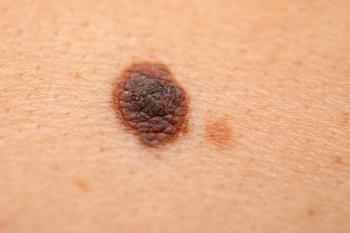
Top pharmacy challenges of 2017
High drug prices continue to plague payers, but various contributing factors intensify the problem.
High drug prices will continue to be the biggest pharmacy challenge for payers in 2017, sparked by the entry of many new specialty drugs on the market for some common chronic diseases- such as diabetes, heart disease, Alzheimer’s, and rheumatoid arthritis-and rare diseases, such as lupus and NASH (nonalcoholic Steatohepatitis, more commonly known as fatty liver disease).
In 2015, drug spend was $364 billion with $98 billion attributed to specialty. These numbers are expected to climb to $483 billion, with $212 billion for specialty by 2020, according to “The 2016 Economic Report on Retail, Mail, and Specialty Pharmacies” by Pembroke Consulting and Drug Channels Institute in January 2016.
Despite being used by only 1% to 2% of the population,
No sign of stopping
Fleming“The primary concerns are the high cost of drugs, drug inflation, and new treatments, the latter in some therapeutic areas such as oncology,” says William Fleming, president, Humana Pharmacy Solutions. “The consumer price index for all products has been trending 3% to 4% for many years but has been double digits for prescription drugs. It’s happening right before our eyes. In the next three to five years, these trends of inflation and new drug innovation will result in nearly half of drug spend being consumed by 2% of the members we serve.”
Drugs for hepatitis C welcomed in a new era of innovation; it was the first time drugs offered a cure-but at an unaffordable price, he says. “The next phase will be for Alzheimer’s and fatty liver disease with potentially new treatments. If drugs can fulfill their promises, even if they cannot cure a disease, that is an awesome innovation.”
BradburyChris Bradbury, senior vice president, integrated clinical and specialty drug solutions for Cigna Pharmacy Management, says Cigna’s clients continue to be concerned about pricing-and how to ensure robust, comprehensive and affordable drug benefits for members and employees.
Rita Numerof, president/cofounder, Numerof and Associates, a global strategy consulting firm, says it is important to continue to change benefit design to influence consumer behavior, giving consumers more stake in the game and a greater role in decision making.
For example, beginning in 2017, both UnitedHealthcare and CVS Health no longer cover Lantus (insulin glargine injection), a long-acting basil insulin used to improve glycemic control, and instead cover Basaglar (insulin glargine injection), the first insulin product approved through an abbreviated approval process by the FDA,
In 2017, they are also excluding Neupogen (filgrastim), a white blood cell-boosting drug, and replace it with Zarxio (filgrastim-sndz), the first biosimilar to be approved by the FDA.
MoraMarc Mora, MD, chief medical officer, Group Health Cooperative, says the payer/provider organization “has a long history of ensuring highly effective and safe medication use. While we continue to fine tune and improve our pharmacy management-including appropriate use of generics-these efforts cannot overcome the most pressing challenge, which is drug pricing.”
Pricing already interferes with the public health benefits that pharmaceuticals offer, he says. “Our first priority remains patient safety and ensuring high quality outcomes for which we are known. And we remain laser focused on tackling the drug pricing issue in a way that best benefits our members.”
While high drug prices will continue to plague the industry in 2017, the following four factors will exacerbate the problem:
1. Missing link between cost and outcomes
Fleming, Numerof and Bradbury concur that the relationship between pharma cost and patient outcomes needs to be further explored.
Numerof“There is a lack of outcomes-based contracts with manufacturers but if you want physicians to buy into value-based reimbursement, payers need to put pressure on manufacturers to demonstrate value and look at outcomes differently,” Numerof says.
Payer organizations are thinking about total cost of care, not just the price of single products, she says. They are looking at the continuum and range of medical and pharmacy costs tied to outcomes. “One drug may be more expensive than an alternative but positively affects the total cost of care,” Numerof says.
“Outcomes-based contracting is more aligned with better health and lower costs,” Bradbury adds. “We need a combination of strategies to create accessibility and affordability and align healthcare delivery and reimbursement based on value, not volume. We must hold manufacturers more accountable in contracts, creating large unit cost discounts day one and unique components to stand behind performance. If drugs don’t perform as promised, there should be more discounts.”
Cigna has developed a host of outcomes-based contracting for hepatitis C, multiple sclerosis, cardiovascular disease and PCSK9 drugs for high cholesterol, and is exploring more opportunities.
“We need to hold manufacturers accountable for ensuring their drugs really work,” Fleming says.
2. Sparse competition
“The challenge is timing in some therapeutic areas,” Fleming says. “For example, when Sovaldi came on the market 2014, as a treatment for hepatitis C, it was the only drug but by the end of the year, there were many more. The same thing is expected to happen with Alzheimer’s. There is the notion of competition to mitigate increases; with competition, payers and PBMs are able to negotiate with manufacturers, as well as improving clinical outcomes with more choices.”
Unfortunately, if some drugs don’t lose patent protection, Fleming warns there might be double-digit annual price increases. Bradbury also is concerned that the lack of competition in specialty drugs due to patent protection and too few drugs on the market for specific conditions are driving drugs to a higher price point.
Numerof sees an opportunity to leverage biosimilars as a source of competition, but recognizes they are only in their infancy.
3. Lack of collaboration
Numerof says there is a lack of collaboration between payers and providers-a relationship which traditionally has bred animosity and lack of trust. “But we have to get beyond that,” she says, acknowledging that physicians are more aligned with payers than ever before.
Bradbury agrees that collaboration could better ensure compliance among physicians and payers. He points out that clients using Cigna as a plan, specialty pharmacy, and PBM has resulted in a savings of $77 per member per year.
4. Crippling policies
Fleming cites another problem: Existing federal policies hinder the ability of Medicare Advantage (MA) plans to fully leverage drug management tools to achieve lower costs for beneficiaries and the Medicare program.
These polices do not allow utilization management tools, such as step therapy and prior authorization, on Medicare Part B covered drugs, he says.
Instead, they require MA plans to provide the same drug coverage as fee-for-service Medicare to members in MA plans, which means that even when the evidence base supports the use of generic or therapeutic drug alternatives, MA plans have limited tools to encourage prescribers to utilize high-value drug treatments.
The next step, he says, is looking at drug approval policy set by the FDA and drug management policy established by CMS.
Numerof holds onto the age-old problem of lack of transparency in pricing and is particularly concerned about PBM transactions, which she sees as still under wraps.
Mari Edlin is a frequent contributor to Managed Healthcare Executive. She is based in Sonoma, California.
Newsletter
Get the latest industry news, event updates, and more from Managed healthcare Executive.




















































